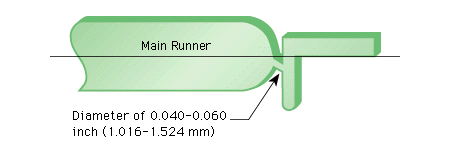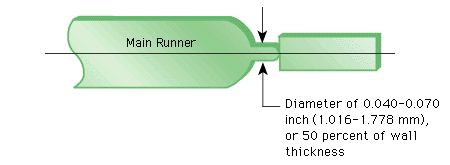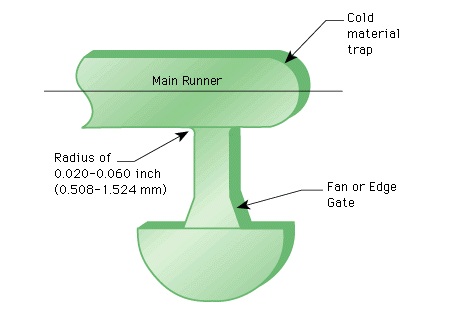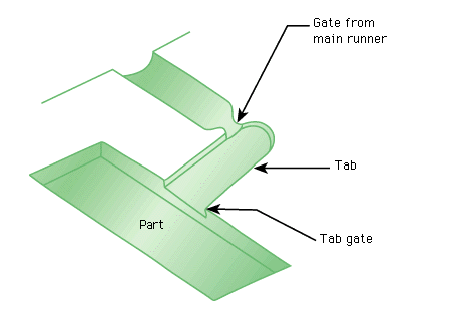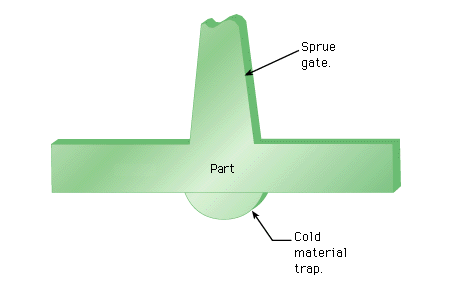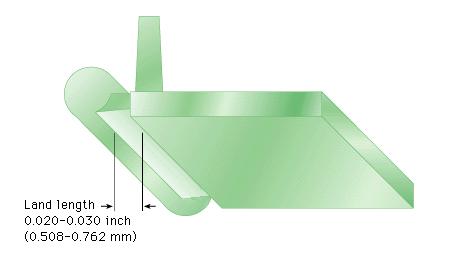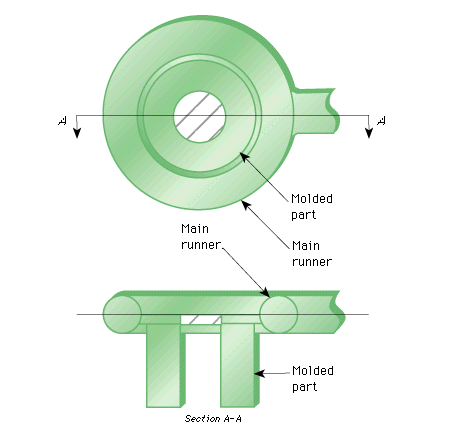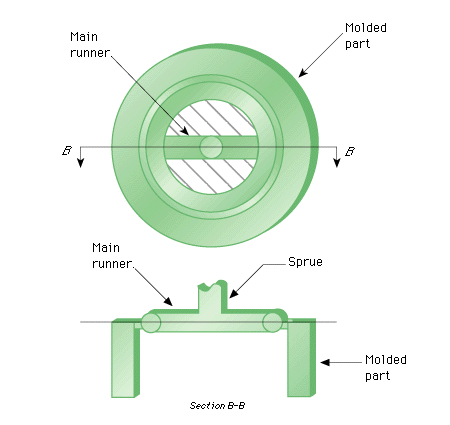The gate serves as the entrance to the cavity and should be designed to permit the mold to fill easily. A cavity can have more than one gate. Gates should be small enough to ensure easy separation of the runner and the part but large enough to prevent early freeze-off of polymer flow, which can adversely affect the consistency of part dimensions. A variety of gate designs and locations are shown below:

